This rustic-looking, beautiful yeast cake is one of our favorite family-baked treats, deliciously infused with pockets of sweet, dry figs and chopped walnuts.
It's also a ridiculously easy Holiday or weekend bake (yeast-leavened) that pairs best with coffee or tea, family, and friends.
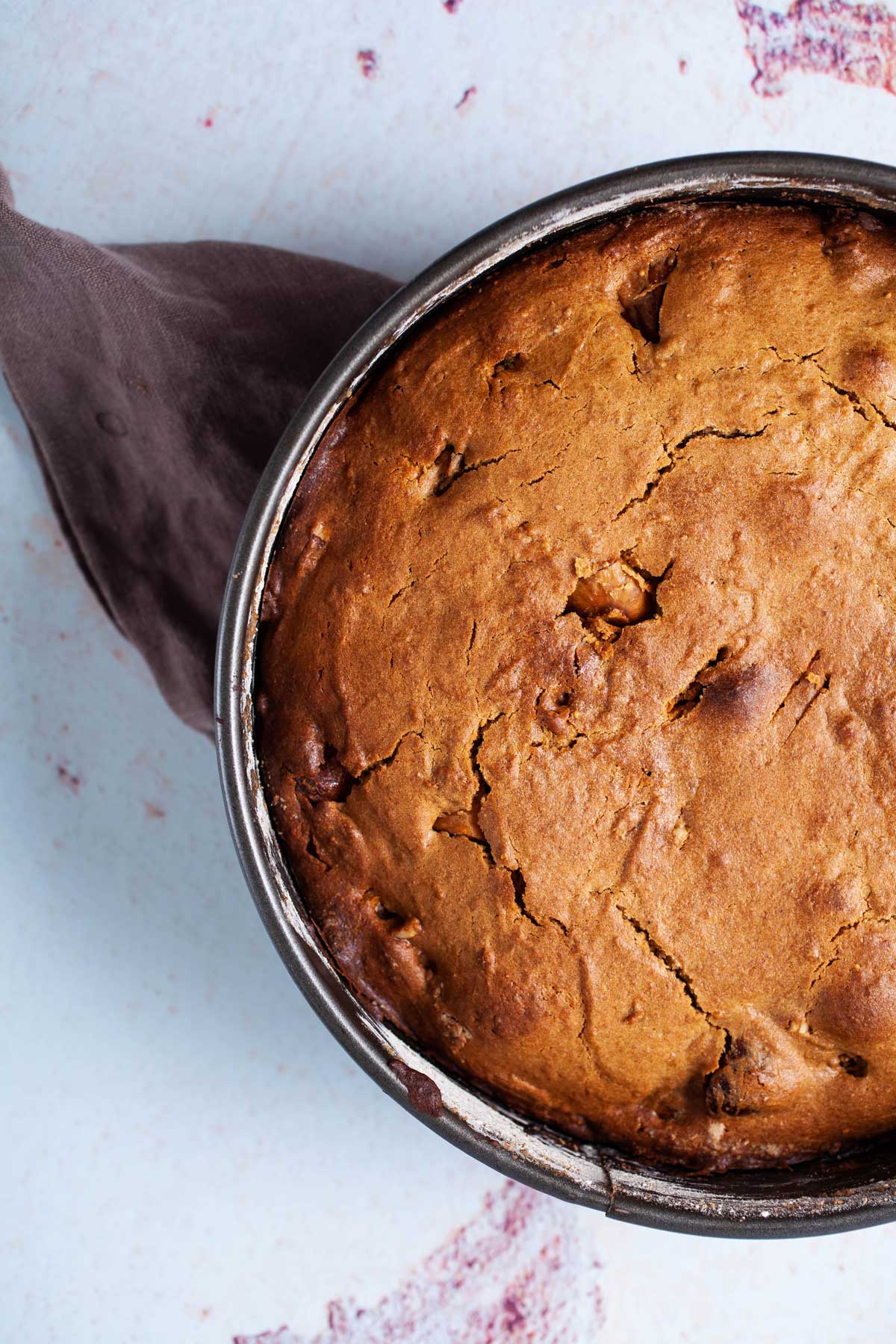
Growing up, special cookies like Speculoos or baked goods like Date Cake or Healthy Breakfast Cake were always reserved for Sundays or special holidays.
That's when the kitchen truly became the heart of the home.
I still love keeping some of these favorite baking traditions alive. From early fall well into the heart of winter, my oven always does a bit of overtime baking goods like this dried fig cake, and everyone loves to gather in a cozy kitchen.
This is just one delicious yeast cake and a great addition to any breakfast or coffee table.
Let's bake!
Jump to:
Why You'll Love This Yeast Cake Recipe
- Yeast-leavened: Yeast in cake gives its own unique taste that's so well worth that little extra time. It offers rich, complex flavors, while chopped figs and walnuts add a nice surprise with each bite.
- Gift of Goodness: Offering a homemade dried fig cake to friends or loved ones is a gift that carries both flavor and sentiment.
- Perfect for any occasion: It never goes out of favor because it tastes like the holidays and lazy weekends. And feels like sweet, cozy Christmas or lazy Sunday mornings.
Ingredients & Notes
See the recipe card for full information on ingredients and quantities.
This dried fig cake uses a few important ingredients to bring the flavors together.
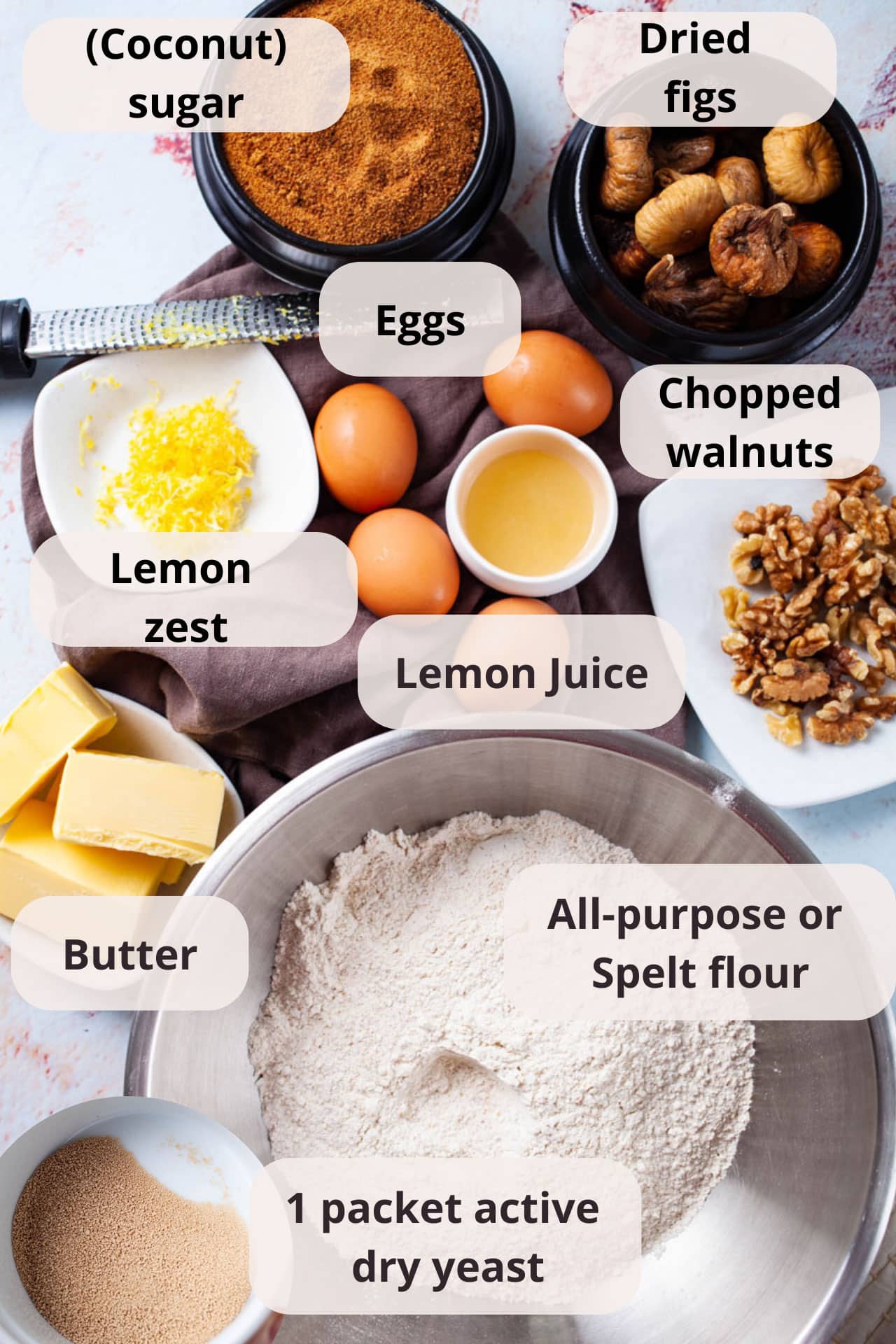
Flour: The original recipe only calls for unbleached all-purpose flour. But I love to replace half of the all-purpose with Spelt flour for a more natural, sweeter flavor.
(Coconut) sugar: This caramel-colored sweetener tastes like brown sugar, which you can use instead.
Grated zest and lemon juice: Lemon zest and lemon juice add a lovely slight acidity to balance the sweet flavors.
Note: You want both in this bake. The citrus zest adds a lovely aroma and brightens up the sweet flavors of this yeast cake, while the juice adds a bit of a tart, acidic element to balance that sweetness.
Yeast: One (¼-ounce or 7 grams) packet of active dry yeast is all you need to leaven this dried fig cake.
Eggs: Choose large farmer's eggs at room temperature. They're easier to whip and will mix much better with the batter, allowing it to rise more easily during the baking process.
Butter: You also want your butter at room temperature. It should be soft and easy to knead or mix well with the dry ingredients.
Dried figs and walnuts: I like to use either black Mission or Smyrna figs to add natural sweetness. Unlike fresh figs, they are available year-round. Although optional, I recommend adding walnuts. It's delicious.
Note: Instead of dried fruit, you can mix in sweet, ripe figs during fig season.
Step-By-Step Instructions
See the full recipe with measurements in the recipe card.
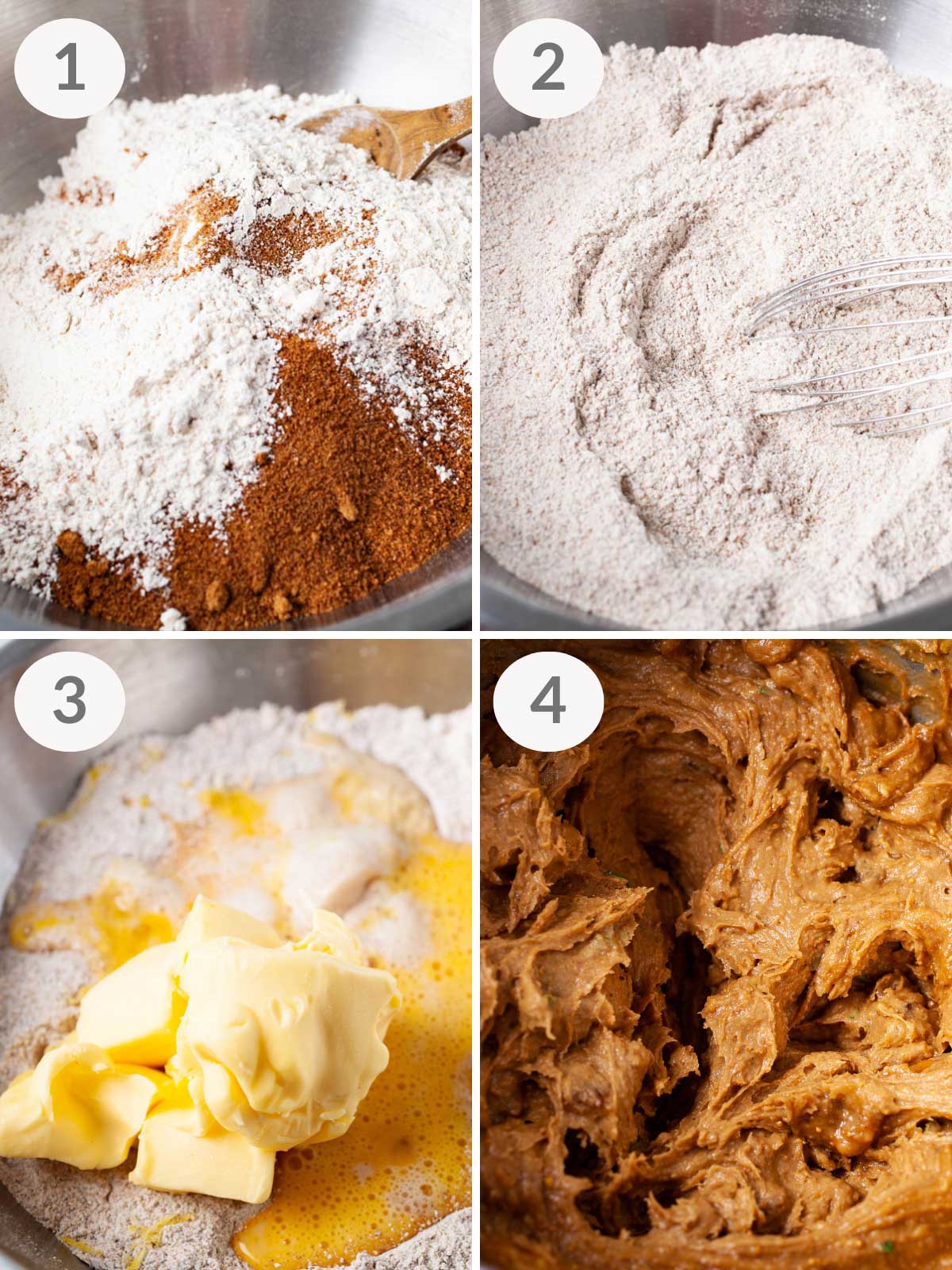
Step One (Picture 1 above) - In a large mixing bowl (or bowl of a stand mixer), add the flour and the sugar.
Step Two (Picture 2 above) - Combine the flour and the sugar with a whisk to break up any lumps.
Step Three (Picture 3 above) - Add the grated lemon zest, lemon juice, rehydrated yeast, beaten eggs, and butter.
Step Four (Picture 4 above) - Mix all the ingredients using a dough hook of a stand mixer or by hand until everything is well combined.
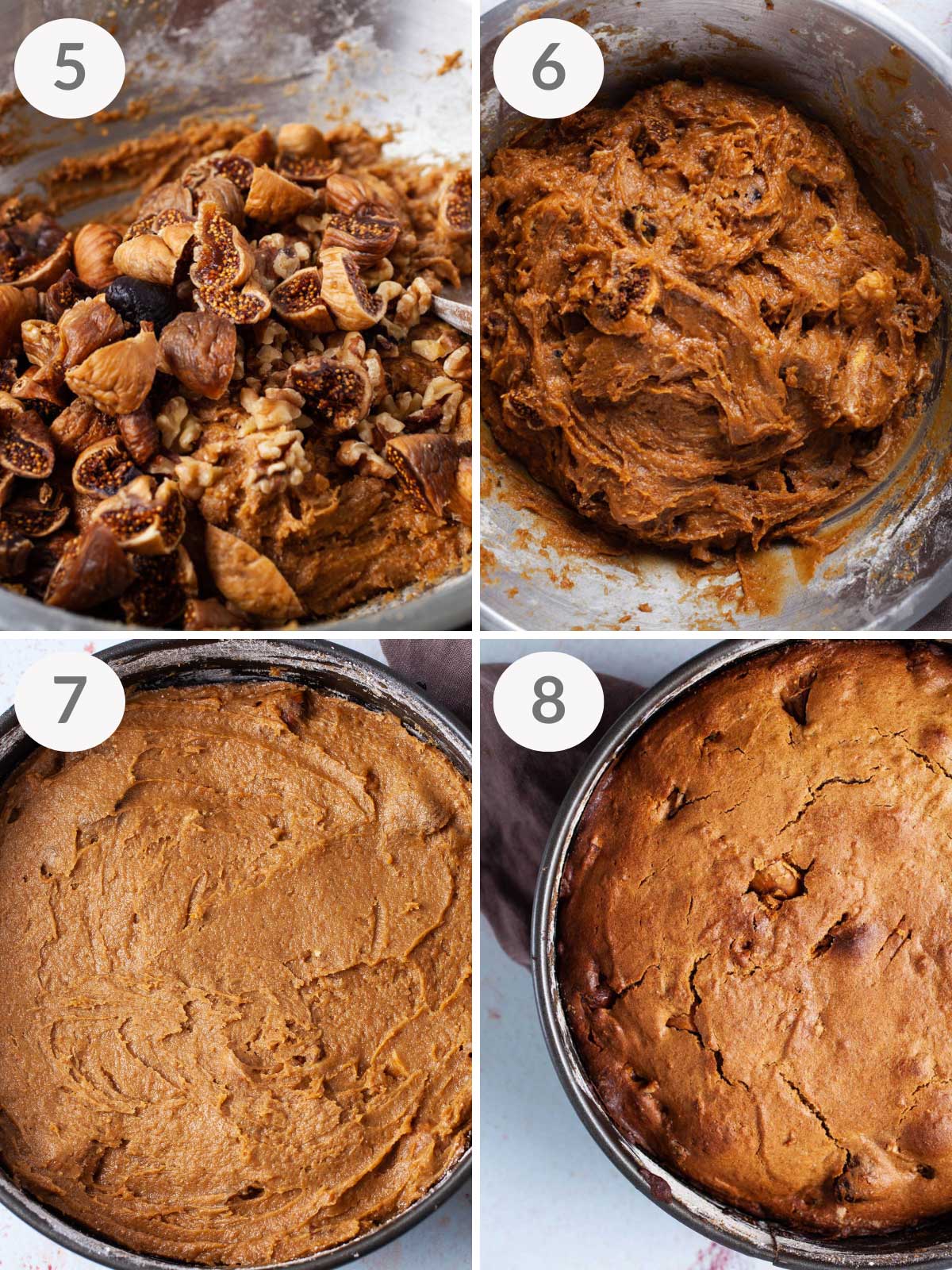
Step Five (Picture 5 above) - Stir in the chopped figs and walnuts until well combined.
Step Six (Picture 6 above) - Cover the bowl with a clean kitchen towel and let the dough rest for about 1 hour.
Step Seven (Picture 7 above) - Use a spatula to spread the dough evenly into the prepared springform pan.
Step Eight (Picture 8 above) - Bake until a toothpick inserted in the center of the cake comes out clean with no wet crumbs clinging to it. The dried fig cake will look rustic and beautifully golden brown.
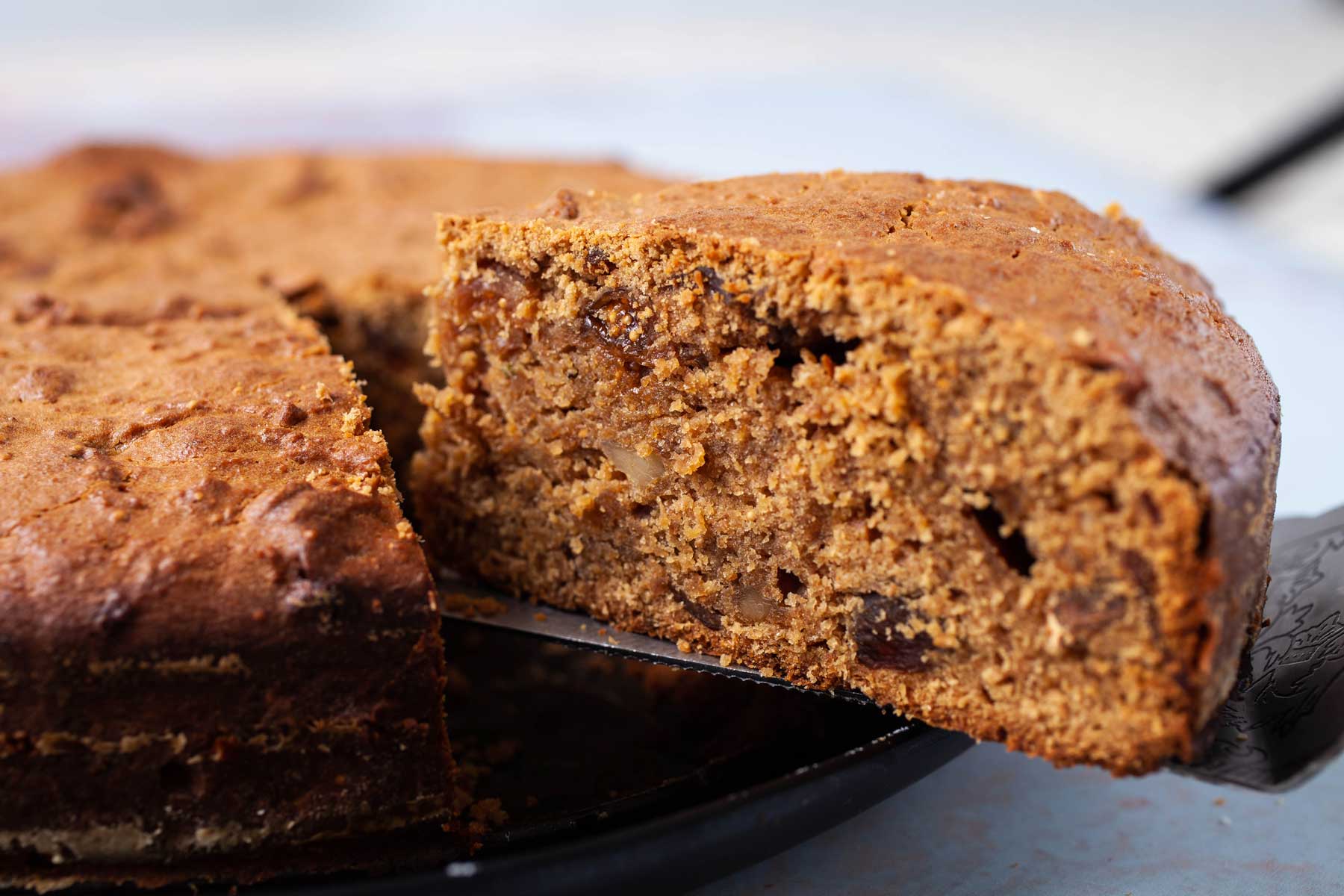
Helpful Baking Tips
- This fig cake recipe uses the lemon zest and juice of two unpeeled and washed lemons (about 155 grams). This will give you about two tablespoons of lemon zest and two tablespoons of lemon juice—the perfect amount for this yeast cake recipe.
- To bring eggs to room temperature, I rest them in a bowl on the kitchen counter for about 30 minutes before I start baking.
- To bring butter to room temperature, rest the amount of butter you need on the kitchen counter for about 30 minutes to one hour. Cutting the butter into smaller cubes will speed up the process. You can also microwave the butter for a few seconds or until it has softened enough.
- Chop the walnuts and figs into tiny pieces to avoid significant clusters in the baked result.
- To ensure dried figs are sweet and still moist inside with their distinctive seeds and don't dry out, store them properly in an airtight container or well-sealed bag.
- Resting time: This batter won't double in size like regular bread or pizza dough. But it will definitely increase in size (by a few inches) and add air and lightness for moist crumbs.
Equipment
- It's best to use a stand mixer with a dough hook, but you can make this cake batter by hand (I often do).
- If using your hands, you can't knead the conventional way, like when making pizza bread, since the batter is fairly wet.
- Instead, combine the flour mixture just enough to ensure all ingredients are equally worked in, especially butter.
Variation To Making Dried Fig Cake
- You can make this dried fig cake with less sugar and more of the equivalent of sweet fig bread.
- Use half the amount of sugar and sprinkle the cake dough with dried thyme leaves before placing it in the oven.
- You could even use finely chopped fresh thyme leaves (two sprigs max) and work into the batter mix.
- This yeast cake variation will have just a hint of sweetness and tastes lovely when served with butter, a compote or fig jam, (fig) preserves, or apple butter.
- The thyme adds a wonderful aroma and pleasant flavor.
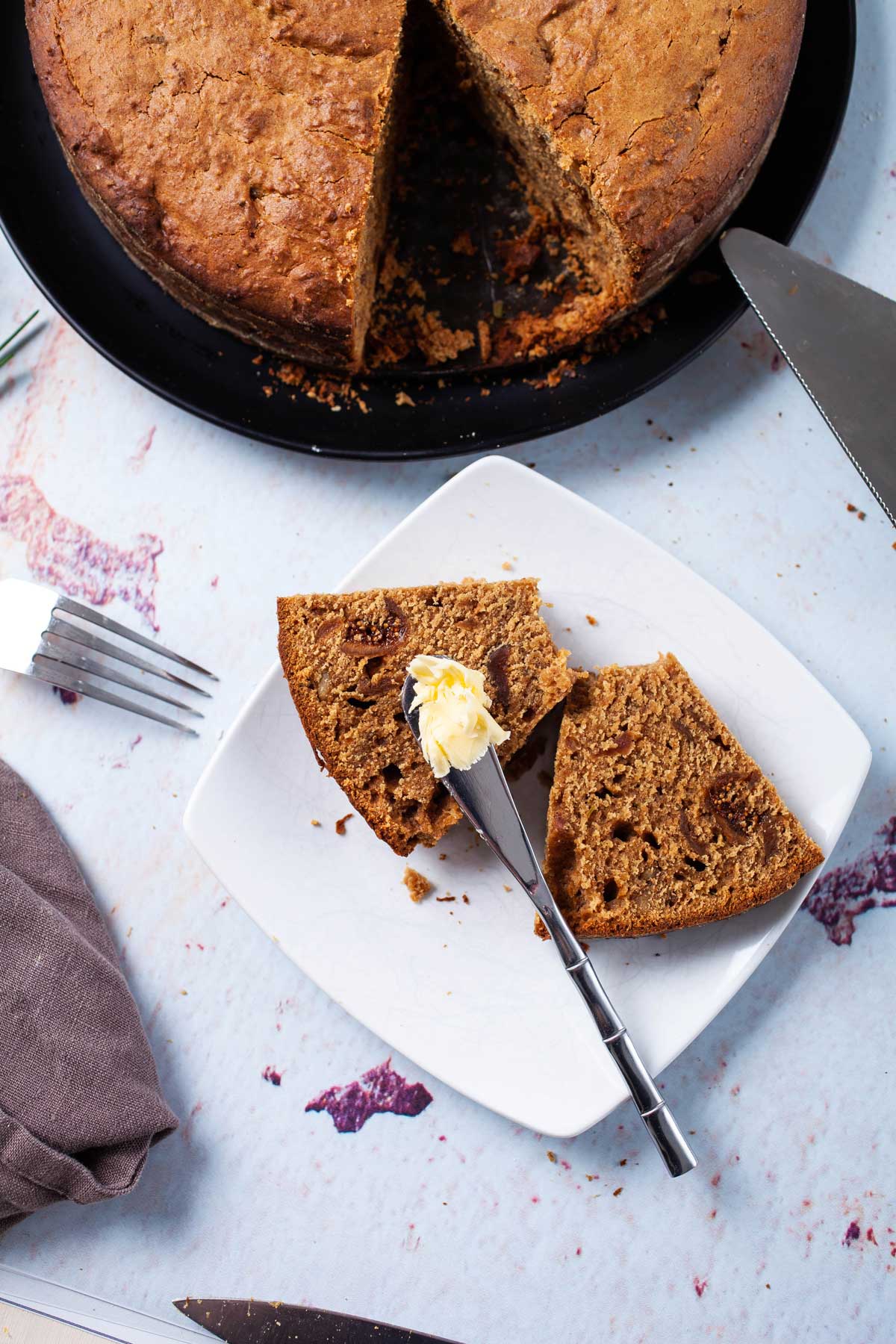
Make It A Holiday Or Breakfast Cake
- This lovely fig and walnut yeast cake is a perfect coffee cake to add to your fall or winter baking.
- It doesn't need any decoration. The top of the cake looks rustic and beautiful enough when presented on a cake stand with extra fresh figs and thyme sprigs on the side.
- Serve on a table with extras like butter, chocolate peanut butter, jam, or compote, your favorite mocktail, and sweet spreads.
- Or make it part of a breakfast grazing board.
Recipe FAQs
Yes, of course. Traditionally, using yeast in cakes was one of the few reliable ways to get cake batter to rise and be significantly more airy and fluffy.
Growing up, we never used the more conventional baking powder as a leavening agent for our cake recipes.
The simple answer is fermentation, which in turn creates air bubbles in your dough or batter, giving it that lighter texture and a slightly crumbly cake structure once baked.
But fermented yeast also adds a noticeable, albeit delicate, unique taste that improves the overall flavor.
A yeast cake also holds its moisture better and can be stored longer on the counter without drying out too quickly.
Yeast cakes require a little more patience because the batter needs time to rise (about 40 minutes to one hour).
It's best to use flour with higher protein content, like all-purpose, bread, or Spelt flour.
These proteins are necessary to develop gluten, which yeast needs to form the cake's structure.
Although the texture will still be light and fairly crumbly, this fig and walnut cake is a bit denser than cakes baked with other leavening agents, making it more of a bread-like treat perfect for breakfast or brunch.
This yeast cake will also have more of a rustic-looking browned crust with a soft interior.
It's not your typical big fluffy cake but a traditionally European-looking old-fashioned yeast cake with beautiful flavors.
Active dry yeast is usually sold in small jars or packets in the grocery store. It is dormant granular yeast that needs to be rehydrated and proofed.
Yes. Double the amount of yeast the recipe calls for, crumble it, and let it soften in ¼ cup of lukewarm water with sugar.
Allow it to bubble and get foamy before you proceed.
If stored in an airtight container, the dried fig cake keeps well for five days at room temperature.
You can also store any leftovers in the freezer for two or three months. If stored in the freezer, it is best to slice it into individual pieces, wrap them in parchment paper, and then store them in a container.
Defrost by letting it sit at room temperature for a bit. I like to pop the slices in a toaster (or microwave for a few seconds).
Step 1: Place the dry yeast cells in a small bowl large enough to hold at least one cup of water. I usually add ½ teaspoon of (coconut) sugar. Make sure that the bowl you use is large enough for the yeast to bloom and expand in size.
Step 2: Add ¼ cup warm water (about 110°F-115°F) and stir or whisk to dissolve the yeast. You need warm water between about 110°F-115°F. It will stay inactive if it is too cold, and the yeast will die if it is too hot. You can use an instant-read thermometer. I usually test the warmth of the water with my wrist. It should feel very warm but not hot.
Step 3: Wait for it to bloom. You will see a layer of fuzzy bubbles forming at the top. If it doesn't start blooming, then the yeast is probably expired.
In the winter, I cover the bowl with a clean kitchen towel to keep it warm for the yeast to bloom.
Step 4: After 10 to 15 minutes, you should see a foamy, bubbly crust that almost doubled in volume.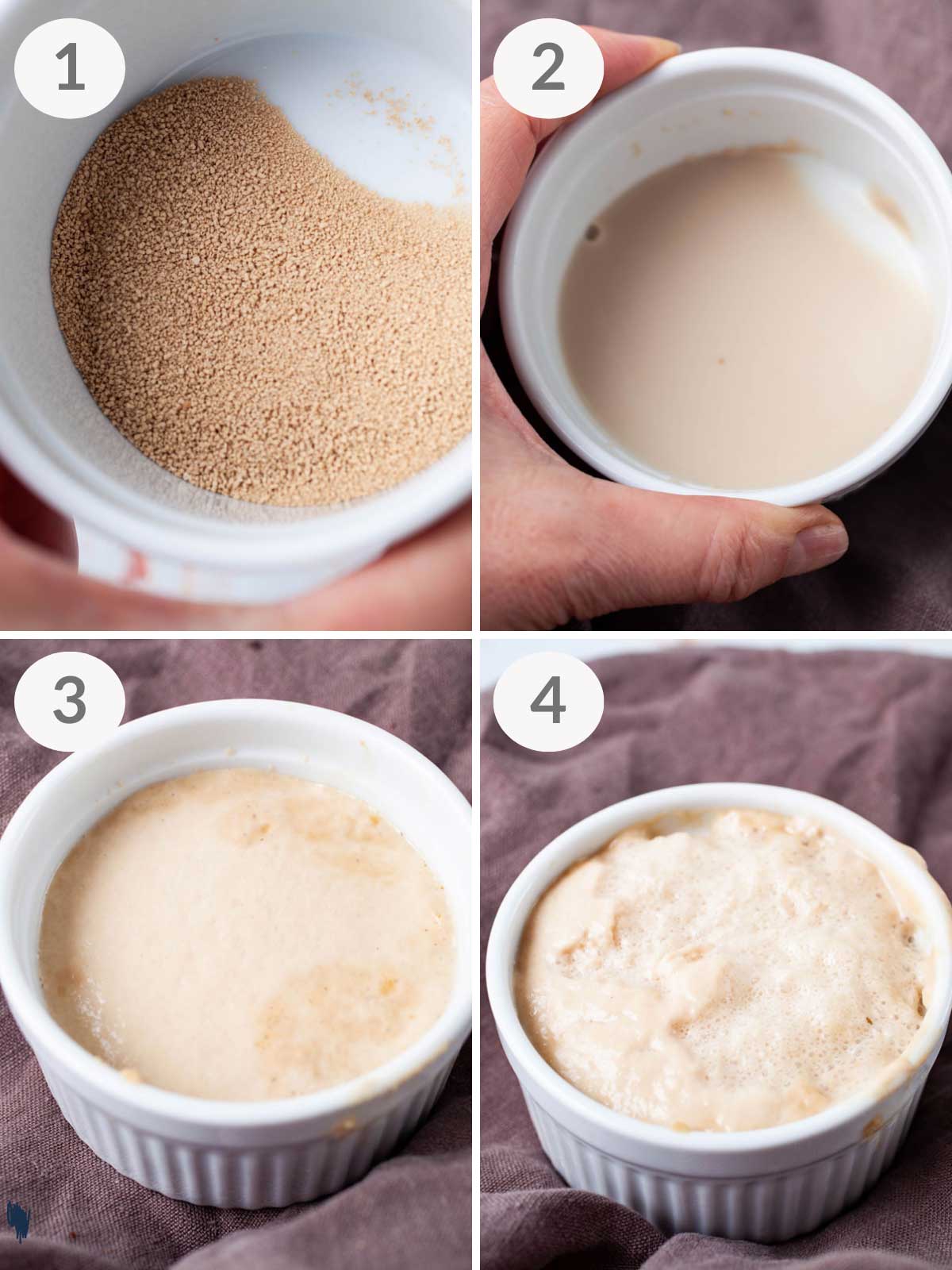
More Amazing Baked Treats You Might Like
Don't forget to subscribe to my Monthly Newsletter!
Your shares and ratings are valuable to me and so much appreciated. They'll help me create more content you and others can enjoy!
This simple yet gorgeous dried fig cake belongs on your table. Enjoy!
📖 Recipe
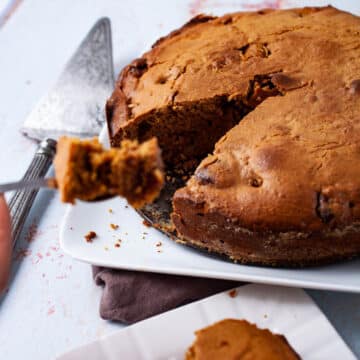
Best Dried Fig Cake (Yeast Leavened)
Mariska RamondinoEquipment
Ingredients
- 4 cups flour (I use a combo of unbleached all-purpose flour and Spelt flour, but feel free to use all-purpose flour only) 500 grams
- 2 cups coconut sugar (you can use pure cane sugar, if preferred) 305 grams
- Grated zest of 1 large lemon or equivalent to 2 tablespoons
- 2 tablespoons lemon juice
- 1 packet active dry yeast, rehydrated according to package instructions ¼ ounce or 7 grams
- 4 large eggs at room temperature beaten
- 9 ounces butter at room temperature 255 grams, plus more to butter the spring form
- 15 dried chopped figs
- ½ cup chopped walnuts 50 grams (you can go up to 80 grams)
Instructions
- You can use a stand mixer with a dough hook or opt to make this cake dough by hand (I often do).
- In a large bowl (or bowl of a stand mixer), combine the flour and the sugar with a whisk to break up any lumps.4 cups flour (I use a combo of unbleached all-purpose flour and Spelt flour, but feel free to use all-purpose flour only), 2 cups coconut sugar (you can use pure cane sugar, if preferred)
- Add the grated lemon zest, lemon juice, rehydrated yeast, beaten eggs, and butter.Grated zest of 1 large lemon or equivalent to 2 tablespoons, 2 tablespoons lemon juice, 1 packet active dry yeast, rehydrated according to package instructions, 4 large eggs at room temperature, 9 ounces butter at room temperature
- Use your hands to combine the ingredients, ensuring no chunks of butter are left. If using a stand mixer, let the dough hook mix and knead your dough on a low to medium setting.
- Don't over-knead it, just enough to work in the butter.
- Work in the pieces of fig and walnuts. If done by hand, I simply stir them in using a wooden spoon.15 dried chopped figs, ½ cup chopped walnuts
- Cover the bowl with a clean kitchen towel and let the dough rest for about 1 hour.
- Close to the end of that one hour, preheat the oven to 350 degrees F/ 180 degrees C.
- Butter the springform pan, then shake in a bit of flour (coating all sides) and tap out the excess.
- Use a spatula to spread the dough evenly in the prepared pan.
- Bake in the center of the oven for 50 to 60 minutes, or until a toothpick inserted in the middle of the cake comes out clean with no wet crumbs clinging to it.
- Allow the cake to cool completely before removing it from the pan.
- Serve as is or top with sifted powder sugar for a more festive look or extra fresh sliced figs.
Notes
Add your own private notes
Whenever you come back to this recipe, you’ll be able to see your notes.
Nutrition (% Daily value)
Disclaimer: This nutritional data is calculated using third party tools and is only intended as a reference.

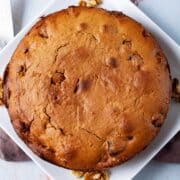
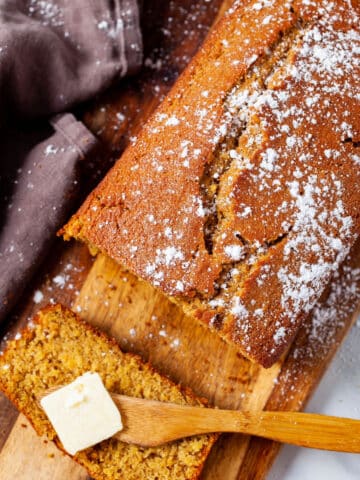



Leave a Reply